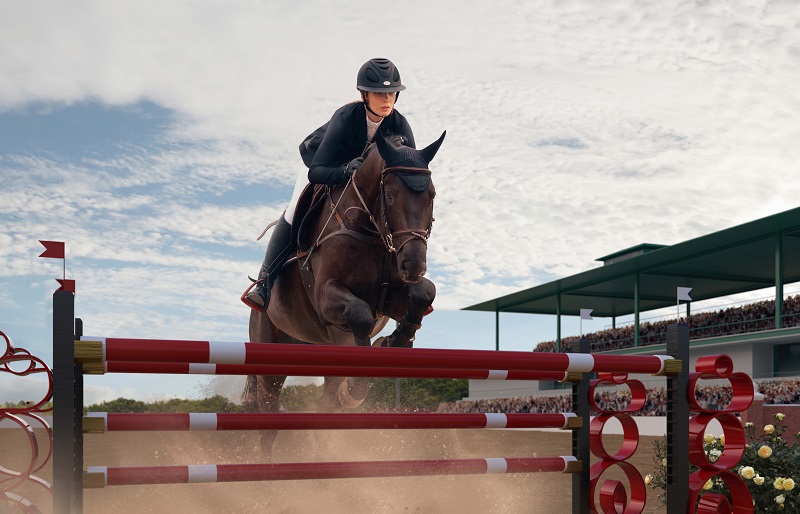How to Keep Your Horse Motivated and Engaged in Jump Training

Training a horse for jumping requires patience, consistency, and a deep understanding of the animal’s needs. Keeping your horse motivated and engaged throughout the training process is essential for achieving success in the ring. A horse that is excited to jump will perform better, stay focused, and have more fun during the experience. So, how can you ensure your horse stays engaged in training and continues to improve?
1. Create a Positive, Stimulating Training Environment
Horses are highly sensitive animals, and the environment plays a crucial role in their mood and motivation. A monotonous or stressful setting can cause boredom or anxiety, both of which hinder progress. A positive, quiet atmosphere helps your horse focus and feel secure.
Mix up the training environment by introducing new obstacles, different types of jumps, or changes in scenery. This keeps your horse mentally engaged and prevents the training process from becoming too predictable. Also, ensure that your horse’s basic needs are met — adequate rest, clean bedding, and a comfortable, safe space to train — all contribute to a better mindset for learning.
2. Break Training Sessions into Manageable Segments
Long, tedious training sessions can quickly drain a horse’s enthusiasm, leading to fatigue and frustration. Horses, like people, benefit from a structured routine that allows for breaks and variety. Instead of pushing your horse through long intervals of jumping, break the session into shorter, more focused exercises. This gives your horse time to rest, recharge, and stay sharp.
Alternating between different types of exercises, such as pole work, gymnastic jumping, or simple flatwork, can keep training sessions interesting and prevent your horse from losing focus. Over time, you’ll notice your horse performing better, with more energy and enthusiasm.
3. Use Positive Reinforcement
One of the most effective ways to keep your horse motivated is through positive reinforcement. Horses respond well to praise, whether it’s a pat on the neck, a soothing voice, or a treat. The key is consistency — reward your horse immediately after a successful jump or effort. This reinforces the connection between a good performance and a positive outcome.
Professionals like Alec Lawler on LinkedIn share insights on how to fine-tune your approach to positive reinforcement, ensuring it aligns with your horse's progress and maintains a strong bond.
However, it’s important not to over-reward, as this could lead to undesirable behaviors. Keep the rewards occasional but meaningful, and always ensure they align with the effort put in by your horse. When done correctly, positive reinforcement helps create a strong bond between rider and horse, increasing motivation and performance.
4. Vary Jumping Patterns
Jumping training can become monotonous if the same course is repeated over and over again. To keep your horse engaged, vary the course layout and jumping patterns. For example, adjust the distances between jumps, change their height, or create a new combination of obstacles. This provides mental stimulation for your horse, encouraging it to think more critically about each jump.
Furthermore, varying the type of jump — such as switching between oxers, verticals, and combinations — can enhance your horse’s versatility and adaptability. This variety not only keeps your horse motivated but also improves its overall jumping skills.
5. Build a Strong Bond with Your Horse
A horse that trusts and respects its rider will be more eager to engage in training. Developing a strong relationship with your horse is crucial for creating motivation. Spend time with your horse outside of training sessions, whether it's through grooming, groundwork, or simply bonding in the stable. Building trust will lead to a more willing and cooperative partner when it comes time to jump.
Understanding your horse’s body language, mood, and energy levels will also help you adjust your training style to suit its needs. Horses are sensitive to their rider’s emotions, so maintaining a calm and positive attitude will encourage your horse to mirror that energy.
6. Provide Adequate Rest and Recovery
Just like any athlete, horses need proper rest to stay motivated and perform at their best. Overworking your horse can lead to fatigue, injuries, or burnout, which will ultimately dampen motivation. Incorporate rest days into your training schedule, allowing your horse time to recover and rebuild energy. This will keep your horse fresh and eager to train when the next session comes around.
A balanced approach to training, with equal focus on work and recovery, ensures your horse stays physically fit and mentally engaged in the long term.
With these strategies in place, your horse will be more focused, enthusiastic, and ready to take on any jumping challenge.


